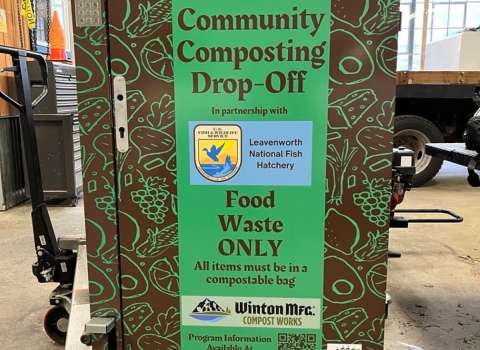The lands and waters of the National Wildlife Refuge System offer a haven for species that are facing extinction. After more than 50 years of supporting the Endangered Species Act, we at the U.S. Fish and Wildlife Service are shining a light on some of the special places that help protect threatened and endangered species.
We help protect a wide variety of plants and animals, including some you may never see. Ozark Cavefish National Wildlife Refuge in Missouri has been protecting sensitive cave habitat since the early 1990s. This 40-acre national wildlife refuge national wildlife refuge
A national wildlife refuge is typically a contiguous area of land and water managed by the U.S. Fish and Wildlife Service for the conservation and, where appropriate, restoration of fish, wildlife and plant resources and their habitats for the benefit of present and future generations of Americans.
Learn more about national wildlife refuge protects Turnback Creek Cave Spring, the outlet of an underground stream designated as critical habitat for the refuge’s namesake - the threatened Ozark cavefish.
Listed as federally threatened in 1984, Ozark cavefish are a little more than 2 inches long, blind and pinkish-white in color. They live in caves, sinkholes or underground springs that are untouched by light in the Ozark region of Arkansas, Missouri and Oklahoma. Since Ozark cavefish live in dark environments, sight is unnecessary, and the fish have no eyes. They sense motion given off by organisms in the water to locate food like plankton, isopods, amphipods, crayfish, salamander larvae and even bat guano.
Sometimes called spring keepers or well keepers and recognized as a sign that water was safe for drinking, Ozark cavefish were commonly found swimming in buckets drawn from wells. Today, Ozark cavefish are still a sign of good water quality.
Contaminants above the ground can have negative impacts below
Turnback Creek Cave consists of Mississippian-aged limestone bedrock. The interconnecting passages are also home to the federally endangered gray bat. These types of caves often have very good water quality, but only if there’s no groundwater pollution from things like pesticides, chemical spills, agricultural runoff and garbage. These contaminants can flow into the groundwater and travel for miles before finally reaching waters where the cavefish live. These underground pools replenish the groundwater supply where people and terrestrial wildlife get their drinking water. Some threats to the Ozark cavefish include water pollution and declining bat populations. They also are at risk of specimen collection, cave disturbance and destruction, as well as changing water tables.
Collectively working to protect at-risk wildlife
Together with our neighbors and partners at Paris Springs Conservation Area, we have been able to protect these important habitats across state and federal lands. This state conservation area conservation area
A conservation area is a type of national wildlife refuge that consists primarily or entirely of conservation easements on private lands. These conservation easements support private landowner efforts to protect important habitat for fish and wildlife and major migration corridors while helping to keep agricultural lands in production.
Learn more about conservation area shares the same mission to protect Turnback Cave and Ozark cavefish populations. Missouri Department of Conservation staff have been invaluable on-site managers, helping to limit disturbance to the protected cave. In addition, they work with nearby landowners to help with conservation efforts.
The cave is closed to the public to help prevent spread of white-nose syndrome, a cold-loving fungus, which has caused the deaths of millions of bats across the country. White-nose syndrome has been detected in Missouri and we are working with state and federal agency partners to lessen the spread.
Endangered species recovery is complex work, often requiring substantial time and resources. Species today face ongoing threats like habitat loss as well as climate change climate change
Climate change includes both global warming driven by human-induced emissions of greenhouse gases and the resulting large-scale shifts in weather patterns. Though there have been previous periods of climatic change, since the mid-20th century humans have had an unprecedented impact on Earth's climate system and caused change on a global scale.
Learn more about climate change and wildlife trafficking. We have a continued commitment as a nation to protect imperiled species.
Each of these species is a part of the web of life, each with a unique cultural and biological community, performing services that are essential to our combined well-being. By conserving them, we help ensure the benefits that accrue from them - healthy air, land and water - on which we depend.
You can make a difference too! Help protect the Ozark cavefish by avoiding caves, disposing of trash properly and retaining forested buffers near cave entrances.






